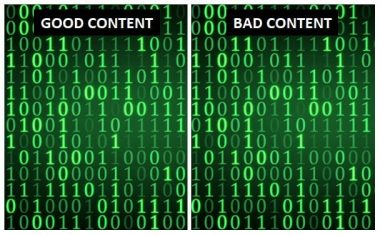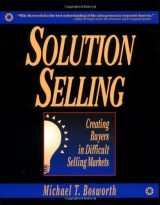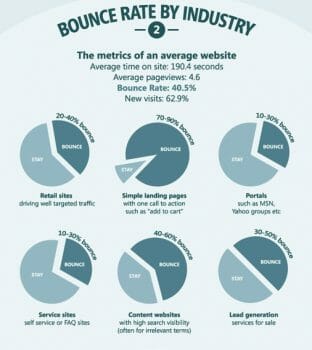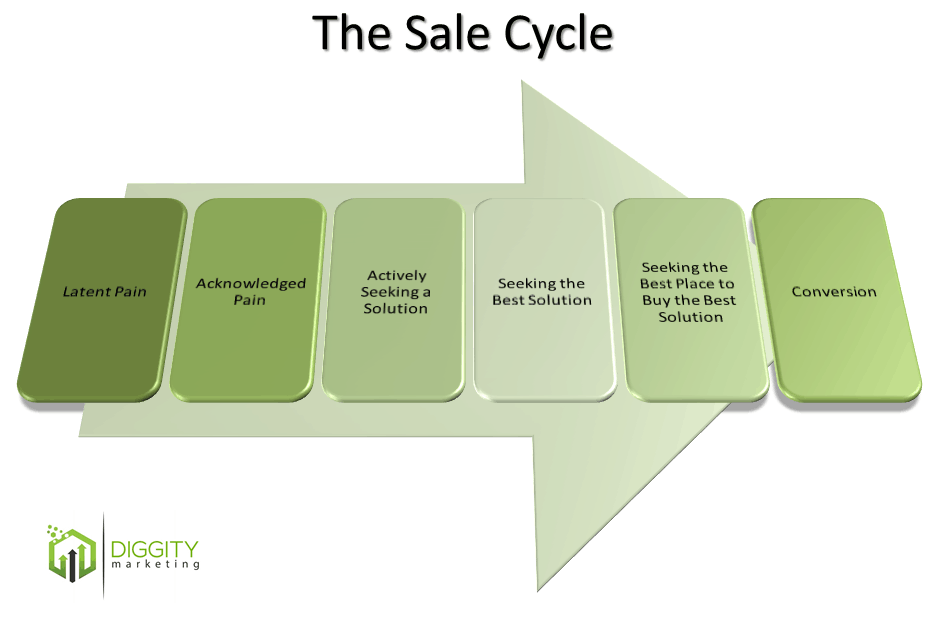As a seasoned digital marketer and content creator, I understand the critical role that content plays in SEO and conversion optimization. Crafting quality content is vital for driving traffic to your website, building brand awareness, and ultimately, converting visitors into customers.
 However, creating an effective content that serves both SEO and conversion goals requires a strategic approach and a deep understanding of your target audience.
However, creating an effective content that serves both SEO and conversion goals requires a strategic approach and a deep understanding of your target audience.
In this article, I will share my knowledge and expertise to provide you with a comprehensive guide on how to create content that drives SEO and conversion success. I will focus mainly on conversion rate optimization (CRO).
Whether you’re a seasoned content creator or a beginner, this guide will equip you with the necessary tools to create compelling and effective content that drives results.
Why You Need to Start Taking Your Content Seriously
I hire only the best writers. Each page of content on my affiliate sites costs at least $200. On some sites the content ends up costing over $10,000 on its own.
Here’s why I’m so serious about content…
Reason #1: To Get People to Read Your Article in the First Place
Let me tell you a story about an average web user named Jeff.
Jeff is a dental assistant. He works 40 hours per week in his office and enjoys fishing on the weekends.
One day Jeff gets home from work, sits down with his family for dinner, and then decides to browse the web, looking to purchase a new fishing rod. He searches “best fishing rod” and lands on your affiliate site.
At that instant, the clock starts ticking: you have less than 1 second to convince Jeff that he’s in the right place.
Luckily you pass the test. You have enough images of people fishing and a huge H1 that reads “Best Fishing Rods in 2017: Reviewed”. You’re in the clear.
Now, you need to convince him that this article is worth reading. This is where copy comes into play.
If you have a boring introduction, Jeff is going to bounce and spend his time elsewhere.
Something like the following introduction paragraph is not very inspiring to dedicate 10 minutes of your life reading…
Choosing a new fishing pole is a difficult process. We have reviewed the best poles to come to the market in 2017. The criteria we have used is… blah blah blah
The first paragraph is your “hook”. It’s your chance to hook your reader into staying and reading. Don’t blow it.
Typically I use three different approaches (sometimes combining them) in order to get folks like Jeff to stay on my sites.
The Knowledge Bomb
 With this approach, you need to teach the reader something they didn’t know before. Show them that you’re an expert on the subject and let them know that if they read your article, they’re about to learn something new.
With this approach, you need to teach the reader something they didn’t know before. Show them that you’re an expert on the subject and let them know that if they read your article, they’re about to learn something new.
In the case of fishing poles, you could lead with an introductory paragraph like this…
As of August 2023, over 55 new fishing pole ****** have become available on the market. Many of these new rods have introduced new technologies never seen before. This makes purchasing quite difficult, without having the resources to actually test …
See the difference?
In the above paragraph’s copy, you’ve shown that your market knowledge is up-to-**** and by throwing around some industry terms you’ve shown that you’re a fisherman.
The Show
In this approach, you want to entertain them in the first paragraph of copy.
Do whatever it takes: crack a joke, use a lot of slang, and be silly.
The idea is to convey to the reader that if they go on and read the rest of this article, they’re going to have a fun time doing it.
This is quite hard to do for the fishing niche, but I’ll do my best…
Hey boss. The name’s Karl. Let set things straight. I’m not much of interweb guy, but I do know a hell of a lot about fishing. This year I’ve spent over 200 days on the water and tested over 40 different fishing poles. Most of them sucked (like this piece of crap) but some of them really fit the bill …
So maybe this isn’t Louis C.K. stand-up material, but you get the idea. Karl’s article is probably going to be fun to read.
Fear Factor
 The third approach I go with, which is often the most effective, is to use fear to make the reader feel like if they don’t read my article, something bad is going to happen.
The third approach I go with, which is often the most effective, is to use fear to make the reader feel like if they don’t read my article, something bad is going to happen.
Horrid things such as…
- They’re going to get ripped off
- They’re going to buy the wrong product
- They’re going to get hurt
If you’ve ever read a headline like “Do NOT Buy Garcinia Cambogia Before You READ THIS REVIEW!!” then you know what I’m talking about.
Let’s try with the fishing niche:
Welcome to Fishermen First’s 2017 Fishing Pole Review
Last year I spent $600 on a new carbon/graphite composite pole. It was stiff to the point that it actually broke in half on its first deep sea run.
At that point I decided there wasn’t enough information out on proper poles, so I decided to take matters into my own hands and I built this review site…
Playing to someone’s desires to avoid getting ripped off is a HUGE emotional motivator.
Putting these Approaches to the Test
The key thing about these different approaches is that there’s never a one-size-fits-all solution to choosing which one will work best for your eCommerce site.
Depending on the niche, one approach might be better than the other.
This is why it’s extremely important to AB split test to find the best approach for your niche.
For the following experiment, I used Optimizely to put The Knowledge Bomb, The Show and Fear Factor against each other in one of my niches.
- Original = The Knowledge Bomb
- Variation #1 = The Show
- Variation #2 = Fear Factor
Each of these gets served to various readers 1/3 of the time.
For the test criteria, I’m looking at “Engagement.” An engagement event occurs when someone does something on my page, such as click. It’s a good indicator of that someone stayed on my page due to my “hook” paragraph.

As you can see here, The Show is highly superior over the other approaches, resulting in an 8.0% increase in engagement over The Knowledge Bomb. Each time a new visitor comes to my site, through the conversion funnel, the chance that they stay and read, and site’s conversion rate, increases by 8%. This adds up quick when you have more traffic like thousands of visitors per day.
This is both surprising and not; surprising because The Show hardly ever wins and not surprising because of the niche that I tested this on (which is a pretty light topic).
You can see now how important it is to test your intro content. If you want to keep people from bouncing once they get to your site, it’s worth taking seriously.
Now that we’ve gotten people to agree to read your page, let’s see how we can use content to keep them there.
Reason #2 – To Get People to Continue Reading Until They Get to Your Call-to-Actions
It’s no secret: we all have internet attention deficit disorder.
When was the last time you fully read every single word of an article?
Hopefully, you’re doing that right now, but I’d be surprised (and honored) if you were.
Most people read the first paragraph of copy and then go into skim mode, rapidly scrolling their eyes down the page until they see something they like.
Or they bounce when they see a lack of things that they like.
Let’s work on that…
Eliminate Walls of Text
As mentioned above, people don’t like to read. Ain’t nobody got time for that.
When you present a top-to-bottom, browser filled wall-of-text, it’s a huge turn off to your visitors.
Instead, break up your content with more visually digestible pieces of content along the way to your CTAs.
Here’s a list of techniques that I commonly use:
- Media: At any given point in the vertical scroll of your article you should see some kind of image, video or one of the following…
- Headings: Use H2, H3, H4 headlines to notify a skimming reader when there’s a new section that he might be interested in.
- Call Outs: Use call-out boxes to highlight important information that they might like
- Formatted Content: Use structured markup like tables and lists to present information in easily digestible ways. Also works well for capturing feature snippets.
Scroll up to see what I’ve done in this article.
Short Paragraphs
Loooooong paragraph blocks look intimidating. They’re hard to read.
Do you ever see that guy on Facebook that doesn’t use his “Enter” key? He writes a post that very well may be the best piece of literature ever to grace the internet, but you witness this textual behemoth and say to yourself “**** that!”
Don’t be that guy.
Make your paragraphs brief (1-3 sentences long).
Bucket Brigades
Bucket brigades are inserted into the copy to encourage the reader to continue reading the article.
They’re short and sweet, and usually convey the promise that more information is going to revealed later. Other times they might promise that a concept will finally start to come together.
Scroll up to see where I’ve inserted bucket brigades into this article.
[Hint: “You’re about to learn all about it”. “Here’s why…” “More on this later…”]
These bucket brigades subconsciously encourage the reader to stick around and keep reading.
Write in the Reader’s Language

Your fancy-pants vocab is no good here
While it may sound fun to show off your Ivy League vocabulary, it typically doesn’t sell.
By using words that the average person and potential customers may not understand, you’ve either confused them or make them feel dumb which results in (you guessed it) a bounce.
Speak simply and clear. Don’t show off.
Use the words that your audience understands.
I wrote a children’s book about 10 years ago and actually took classes on how to do it properly. Did you know they actually have different writing styles for 2-3 graders as opposed to 4-6 graders?
They have entirely different vocabularies.
Make sure you use the right vocabulary for your audience, whoever that may be.
Understand Where Your Visitors Are in the Sale Cycle
Any serious marketer or salesperson that wants to truly understand the psychology of a prospect needs to understand one very fundamental concept…
That concept is called the “Sale Cycle”.
There are different versions of the sale cycle so depending on where you first learn it the steps might come out different, but the model I adhere to is illustrated as follows.
- Latent Pain – The prospect has an issue, but it doesn’t register to him that isn’t a problem at all. For example, someone might be overweight but simply not notice it nor do they care. To get them to the next stage of the sale, you would need to educate the person that being overweight poses health problems.
- Acknowledged Pain – The prospect now acknowledges that being overweight is an issue. People are in this phase if they’re searching for terms like “how to lose weight”. Your job is now to communicate that there are indeed solutions to this issue and that they do indeed work (this last part is very important).
- Actively Seeking a Solution – The prospect is looking around for solutions. He’s searching around using keywords like “best weight loss supplement”. Your job is to show him that one of them is the best, such as garcinia cambogia, a product I still promote.
- Seeking the Best Solution – The prospect is searching for more information on the best product and is searching for “garcinia cambogia reviews”. Confirm to him that this product is the best and he’ll be ready to buy it. Testimonials work well in this stage.
- Seeking the Best Place to Buy the Best Solution – The prospect wants to get a good deal, with free shipping, money back guarantee, etc. Give him that and he will…
- Convert
Read this over a few times.
Understanding the sale cycle has helped me in an infinite number of business situations – more than I can count.
But how does this apply to writing search engine optimization content and keeping people on your page?
You need to match your content with the intent of the search.
Here’s what happens when you ignore the sale cycle…
Rewinding Back in the Sale Cycle
If someone searches for “best fishing pole” and your first 5 paragraphs are about why a good fishing pole can help them fish better, they’re going to bounce.
These types of keywords indicate prospects that are ready-to-buy. They searched for “best fishing pole” because they want to know which one is the best so they can buy it. They don’t need to be told again why good fishing rods are good. This is where you lost them.
Fast-forwarding Prematurely in the Sale Cycle
On the contrary, if you fast forward into the sale cycle, you’re going to lose people as well.
Imagine someone searching for “how to lose weight”. They’re in the Acknowledged Pain phase but you’ve immediately served them some “Seeking the Best Place to Buy the Best Solution” content with a one-time-only free trial offer on garcinia cambogia.
The reader is gone, gone, gone.
Instead, respect the sale cycle.
Lead potential customers through the steps of the cycle, one-by-one, and then pitch your miracle weight loss pill when they’re ready.
Remember to take a look at the keywords people are using to get to your page and serve them up the appropriate content, so they continue along the path.
Sequence each piece of content, one after another, so the conversion funnel leads the visitor along the sale cycle naturally and gently.
This is the key to keeping people on the page, and the key to getting them to convert.
Reason #3 – To Get People to Convert
Let’s imagine that your content, thus far, has done its job. The visitor has stayed on your page and read it to the point of that they’re introduced to your call to action.
This is the pivotal point – the ultimate goal of your website.
It makes sense that the copy around these CTAs is some the best written copy on your entire website.
Let’s use another example to illustrate a bad example of conversion copy versus a strong example of conversion copy.
In this example, we own BroomstickBros.com (a review site or user feedback for Quidditch flying broomsticks)
The reader got to your page by searching “best quidditch broomstick”, started reading your article, and got all the way down to your #1 product: The Nimbus 2000.
Even muggles know this is, by far, the best broomstick on the market, but let’s pretend they don’t and try to pitch it anyways.
#1 – The Nimbus 2000
 The Nimbus 2000 has been the top of our lists for the past 2 years. It has a high top speed, great handling, and is crafted with the highest precision. It comes with a 2 year warranty as well. Use the link below to check the price on Amazon.
The Nimbus 2000 has been the top of our lists for the past 2 years. It has a high top speed, great handling, and is crafted with the highest precision. It comes with a 2 year warranty as well. Use the link below to check the price on Amazon.
![]()
Not bad… but definitely not good.
Here are some of the key essentials that pre-CTA conversion copy requires:
- Convince them that this is indeed the #1 product
- Talk about the benefits of the product to the potential customers, not its features
- Play to their desire to get a real, authentic product and not a knock-off
- Play to their desire to get the best price (we talked about this before)
- Dispel all need to get a second opinion by placing a testimonial
Let’s give it another shot…
#1 – The Nimbus 2000 (Harry Potter’s Choice)
 The Nimbus 2000 has been Potter’s broomstick for the past 4 Quidditch seasons. With it, just like Harry, you’ll ride faster than your opponents and you’ll easily outmaneuver their defenses. Be sure to watch out for knock-off imitations that are springing up as of late. The link below will get you to the official supplier which has the best price available on the Nimbus 2000 as of August 31, 2023.
The Nimbus 2000 has been Potter’s broomstick for the past 4 Quidditch seasons. With it, just like Harry, you’ll ride faster than your opponents and you’ll easily outmaneuver their defenses. Be sure to watch out for knock-off imitations that are springing up as of late. The link below will get you to the official supplier which has the best price available on the Nimbus 2000 as of August 31, 2023.

![]()
How’d we do?
- If the best player uses it, it’s the best product.
- We didn’t mention how fast the broom goes. We talked about how fast YOU’LL go.
- Scared them from getting a fake product.
- Told them where to get the best price
- Slapped on a testimonial for good measure
If we were to split test this, I can guarantee that the second piece of copy would increase conversions.
In fact, I’ve already tested it.
In a niche site of mine I created the following experiment in Optimizely:

- Original – Bland, straight forward content
- Variation #1 – Using all elements above
- Variation #2 – Leaving out elements #3-5
Our metric that we’re watching is the number of clicks on the call to action following the copy.
As you can see here, throwing all these copywriting elements together gets a much higher site’s conversion rate optimization. And in this case, items #3 – #5 seem to be carrying most of the weight.
The numbers look nice and all but let me translate this into dollars for you.
If this call to action was generating $1000/month, after switching to variation #1, it is now generating $1429/month.
If you’re in the leadgen game, conversion is achieved through a contact form. For that, I recommend HubSpot’s free contact form builder or some other tools to get this done.
I hope you’re starting to see the value of copywriting when it comes to conversion rate optimization. It’s just as important as your SEO strategy. Here’s a good guide on the basics.
Let’s now take a look at how you can improve your skills.
How to Level-Up Your Copy Game
Start Reading more Books
Here’s a list of books I recommend reading that have been hugely impactful in my life with regards to copy.
Solution Selling by Michael Bosworth – This book best lays out the sale cycle which you read about above. The sale cycle is fundamental in how you lay out the flow of your content. You need to make sure you’re giving people what they came there to read, and you need to progress them to the next stage in the sale cycle, one level at a time. This book is all about that.
– This book best lays out the sale cycle which you read about above. The sale cycle is fundamental in how you lay out the flow of your content. You need to make sure you’re giving people what they came there to read, and you need to progress them to the next stage in the sale cycle, one level at a time. This book is all about that.
Convert! By Ben Hunt – This book is a bit old. It subscribes to the old idea that we would make a single web page for each stage in the sale cycle. That might have worked great in 2010, but now Google likes long form pages that cover the entire topic. Nonetheless, the knowledge in this book is profound. You just need to apply it to modern day long-form content.
The Online Copywriter’s Handbook by Robert Bly – Most of the greatest copywriting books are written for the pre-internet days. This book is adapted for the digital realm and is quite good I might add. Even covers copywriting differences between website homepages vs landing pages, SEM, and email marketing as well.
by Robert Bly – Most of the greatest copywriting books are written for the pre-internet days. This book is adapted for the digital realm and is quite good I might add. Even covers copywriting differences between website homepages vs landing pages, SEM, and email marketing as well.
Read More Articles on Copywriting
I recently stumbled upon the following two articles which were superb, especially when it comes to keeping people on the page.
Read Other People’s Copy
When you’ve stumbled upon a nice piece of copy you’ll know it.
You’re sucked into the article. You feel like the author definitely knows what they’re talking about. You read the article quickly and it never feels like it’s a struggle to get through. In fact, it seems like it was written for you and even uses your own words.
This is good copy.
Unfortunately, you won’t find it too often in the search engine optimization world. Affiliate, leadgen and client sites rarely have extremely compelling content unless you get lucky.
Look towards big marketers and check out what they’re writing. There are free lessons all around us.
Outsource It
For some people, writing simply isn’t in their blood.
And if you’re not a native English speaker, the challenge of writing in a language that isn’t your primary language is beyond daunting.
In these cases, I recommend outsourcing.
I outsource my content as well. While I might have decent skill in writing copy that the search engines and visitors like, I’m certainly not better than experts that do it full time.
Who do I typically outsource to?
SEO Butler
 Jonathan Kiekbusch’s SEO Butler has a premium content service. This is not to be mistaken with their PBN content offering.
Jonathan Kiekbusch’s SEO Butler has a premium content service. This is not to be mistaken with their PBN content offering.
SEO Butler’s premium content team is based in the US and consists of all college graduates. When they were first setting up the program, I worked with them on many of the concepts you’ve learned in this article and they actually implemented everything we discussed.
Use Coupon Code “DIGGITY10” for 10% off
So… does this stuff actually work in practice?
Yes, it does work in practice.
At the beginning of last month (August 1, 2017), I started working on an affiliate site that I purchased. It was making $2100/month when I got my hands on it.
Here’s what daily traffic looked like over August…

Pretty flat, right?
But check out the increase in monthly revenue from just going all-out on content CRO:

Don’t believe me? This site has about 10 different affiliate networks involved with it, so I’ll just post a couple of dashboard screenshots:

No increase in traffic, but 2.46x increase in revenue?
How? Content CRO.
To Sum Up
I hope this article helped you see the value of content, both as an SEO tool but also in terms of increasing conversions.
While most people are focused on backlinks, we tend to ignore the high-ROI testing we could be doing on the actual copy on our site’s conversion rate to get people to stay on our sites and make us money.
If you have any personal stories about how optimizing content has made a difference in your business, please comment below. Conversion rate optimization efforts for search engine optimization should be on your mind all the time.
To add… I’m going to be taking a brief hiatus from my blog so I can focus on a course I’m releasing with some friends that has been on the backburner for way too long.
I cherish this blog for the opportunity to share my ideas and test results with others that are gracious enough to listen to me. But there’s even more information that I’ve always wanted to share in a more detailed and intense manner which a blog isn’t suitable for.
To stay informed of my next big thing, please sign up below.
I’ll keep you in the loop.




